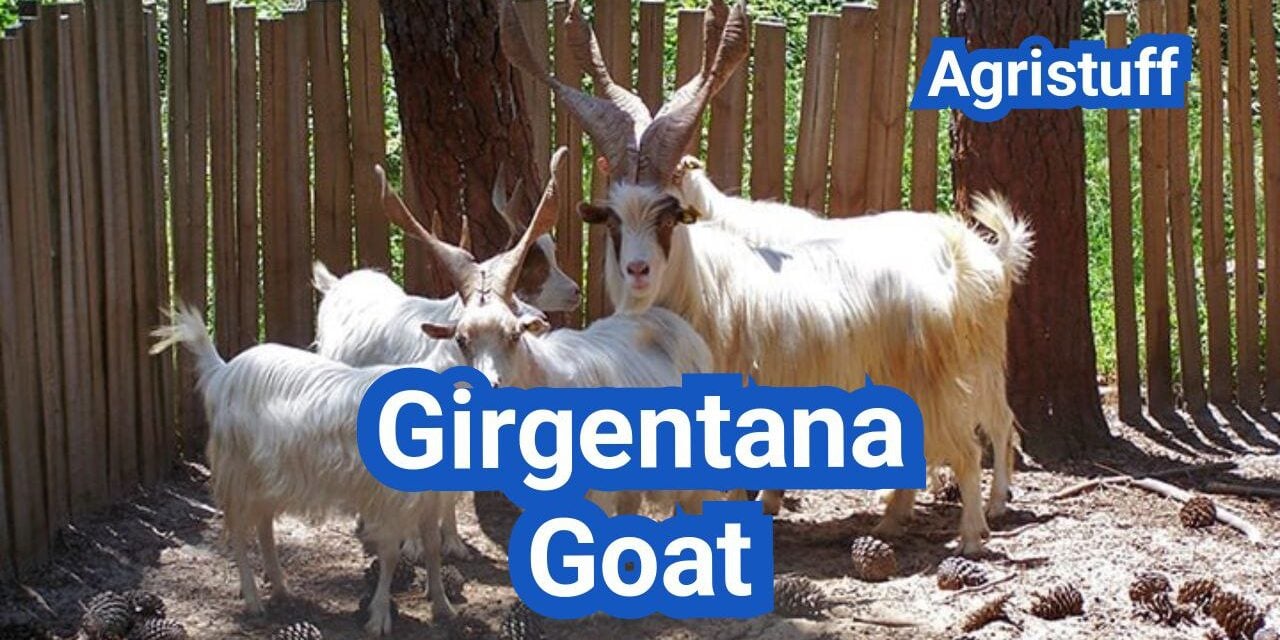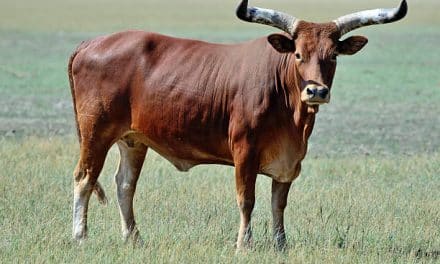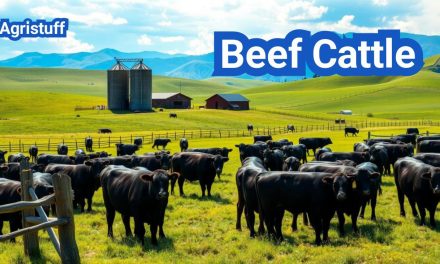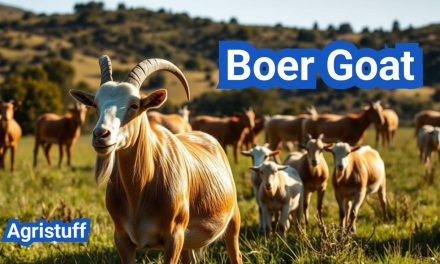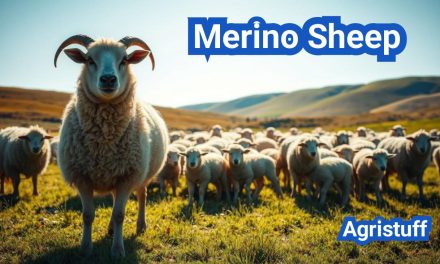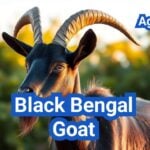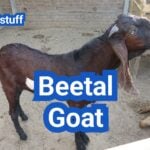The Girgentana goat is a unique and ancient breed originating from the province of Agrigento in southern Sicily.
This Italian breed of domestic goat has a rich history and distinct characteristics that have been preserved over time.
The breed is known for its impressive horns and robust build, making it a notable example among heritage goat breeds USA.
Key Takeaways
- Originated in Agrigento, Sicily
- Known for distinctive horns and robust build
- An example of heritage goat breeds
- Rich history and preserved characteristics
- Significant in the context of Italian domestic goat breeds
The Fascinating History of the Girgentana Goat
With a history as old as the hills it grazes on, the Girgentana goat is a testament to the agricultural heritage of Sicily. The breed’s origins are not well-documented, but it is believed to have been introduced to the island by either Greek colonists or Arab invaders, reflecting the complex cultural tapestry of Sicily’s past.
Ancient Origins in Sicily
The Girgentana goat’s ancient origins in Sicily are a subject of interest among historians and breed enthusiasts. While the exact timing and circumstances of its introduction to the island are unclear, it is evident that the breed has been an integral part of Sicilian agriculture for centuries. The Girgentana goat’s ability to thrive in the island’s rugged terrain has made it a valuable asset to local farmers.
“The Girgentana goat, with its distinctive spiral horns and robust constitution, has been a cornerstone of Sicilian dairy farming for centuries.”
Historical Significance in Italian Agriculture
The Girgentana goat holds significant historical importance in Italian agriculture, particularly in the context of dairy production. The breed’s milk is renowned for its quality and is used to produce a variety of traditional Sicilian cheeses. The Girgentana goat’s contribution to the local economy and culinary traditions underscores its value beyond its role as a livestock animal.
A closer examination of the Girgentana goat’s historical significance reveals its impact on the development of Sicilian agriculture. The breed’s hardiness and productivity have made it a preferred choice among local farmers, contributing to the preservation of traditional farming practices.
| Aspect | Description | Significance |
|---|---|---|
| Origin | Believed to be introduced by Greek or Arab invaders | Reflects cultural exchange and influence |
| Agricultural Role | Dairy production, land management | Essential to local farming and economy |
| Cultural Significance | Integral to Sicilian traditions and cuisine | Preserves heritage and local identity |
Origin and Development of the Girgentana Goat

In the rugged terrain of Sicily, the Girgentana goat has evolved over the centuries, shaped by its environment. This ancient breed is named after the city of Girgenti, the former name of Agrigento, highlighting its deep connection to the region.
The Agrigento Province Connection
The Girgentana goat’s origin is closely tied to the Agrigento province in Sicily. The breed developed in this region, where it was valued for its hardiness and ability to thrive in challenging terrain. The unique characteristics of the Girgentana goat were shaped by the local climate, geography, and agricultural practices.
Key factors influencing the breed’s development include:
- The region’s rugged landscape, which favored goats with strong climbing abilities.
- The local climate, characterized by hot summers and mild winters, to which the Girgentana goat adapted.
- Agricultural practices of the local population, who bred the goats for their milk, meat, and hair.
Evolution of the Breed Through Centuries
Over the centuries, the Girgentana goat has undergone significant evolution, influenced by various factors including cross-breeding with other local goat breeds and adaptation to changing environmental conditions.
The breed’s evolution is marked by several key developments:
- The development of its distinctive spiral horns, a trait that has become iconic for the breed.
- Adaptation to the local vegetation, enabling the Girgentana goat to thrive on the available flora.
- Selection for desirable traits such as milk production, meat quality, and hardiness.
The Girgentana goat’s development is a testament to the ingenuity of local farmers and the breed’s inherent resilience. Today, it remains an important part of Sicily’s agricultural heritage and a valuable resource for local communities.
Physical Characteristics of the Girgentana Goat
The Girgentana goat boasts a unique set of physical traits that distinguish it from other breeds. One of its most notable features is its impressive physical appearance, which has been shaped by centuries of selective breeding.
The Iconic Spiral Horns
The Girgentana goat is perhaps best known for its distinctive spiral horns, which are a hallmark of the breed. These horns are not only aesthetically pleasing but also serve as a key identifier for the breed. The spiral shape is characterized by a smooth, even curve that can grow quite long in mature animals.
Coat Color and Texture
The Girgentana goat’s coat is typically white, although some individuals may display brown speckles or markings. The coat itself is known for being quite long, particularly in certain areas such as the neck and shoulders, where it can form a sort of ruff or mane. This longer hair can provide additional protection against the elements.
Size and Body Structure
In terms of size, the Girgentana goat is considered to be of moderate stature. Both males and females have a robust body structure, with well-developed muscles that indicate their hardiness and adaptability. The breed’s overall build is well-suited to its origins in rugged, hilly terrain, where agility and sure-footedness are essential.
The combination of the Girgentana goat’s impressive horns, distinctive coat, and robust body structure makes it a truly unique and valuable breed. These physical characteristics not only contribute to the breed’s aesthetic appeal but also play a crucial role in its ability to thrive in challenging environments.
Understanding the Girgentana Goat Breed Profile

The Girgentana goat is a unique breed with a rich history and distinct genetic profile. As one of the eight autochthonous Italian goat breeds, it has been an integral part of Sicilian agriculture for centuries. Understanding its breed profile is crucial for appreciating its value and the challenges it faces.
Genetic Makeup and Distinctiveness
The Girgentana goat’s genetic makeup is characterized by its distinctive spiral horns and robust body structure. Research into the breed’s genetic diversity has shown that it possesses a unique genetic profile, different from other Sicilian goat breeds. This distinctiveness is partly due to its adaptation to the specific agro-climatic conditions of the Agrigento province in Sicily.
Studies on the dairy goat casein genotypes have revealed that the Girgentana breed has a high frequency of certain casein variants, which contribute to its milk’s quality and nutritional properties. This genetic uniqueness makes the Girgentana goat an important subject for conservation and breeding programs aimed at preserving its genetic heritage.
Comparison with Other Sicilian Goat Breeds
When comparing the Girgentana goat with other Sicilian goat breeds, several differences become apparent. The table below summarizes some key characteristics of the Girgentana breed in comparison to other notable Sicilian breeds.
| Breed | Origin | Horn Characteristics | Milk Production (liters/year) |
|---|---|---|---|
| Girgentana | Agrigento, Sicily | Spiral horns, large | 300-400 |
| Derivata di Siria | Sicily | Horns present, variable size | 250-350 |
| Messinese | Messina, Sicily | Horns present, smaller | 200-300 |
The Girgentana goat stands out due to its impressive spiral horns and relatively high milk production. Its genetic distinctiveness and the quality of its milk make it a valuable breed for dairy production and a significant component of Sicilian agricultural heritage.
Temperament and Behavior of Girgentana Goats
The Girgentana goat breed is distinguished by its unique temperament, which combines intelligence with a generally docile disposition. This blend of traits makes them an interesting subject for study and interaction.
Personality Traits
Girgentana goats are known for their intelligence and activity, characteristics that contribute to their engaging personality. They are generally docile, which makes them easier to handle, especially for farmers who are new to raising goats. Their intelligence also means they can be trained to follow certain routines and commands, making them quite versatile in various farming contexts.
One of the notable personality traits of Girgentana goats is their curiosity. They are known to explore their surroundings actively, which can sometimes lead to mischief if they are not properly supervised. However, this curiosity also makes them engaging to watch and interact with.
Social Behavior and Herd Dynamics
Girgentana goats are social animals that thrive in the company of others. They have a natural inclination to form herds, and within these herds, they establish a hierarchy. Understanding their social behavior is crucial for farmers who wish to raise them successfully.
- They are known to form close bonds with other goats in the herd.
- Girgentana goats communicate effectively using a variety of vocalizations and body language.
- Their social structure is typically led by a dominant goat, which helps maintain order within the herd.
By understanding and respecting their social behavior, farmers can create a more harmonious and productive environment for their Girgentana goats. This includes ensuring that the herd is well-balanced and that there are adequate resources for all members.
Conservation Status of the Girgentana Goat
The Girgentana goat, a breed known for its distinctive spiral horns and rich history in Sicily, has faced significant challenges to its survival. Historically, the Girgentana goat was valued for its milk and meat, but its population declined significantly in the mid-twentieth century.
Population Decline in the Mid-Twentieth Century
The decline of the Girgentana goat population in the mid-twentieth century can be attributed to several factors, primarily competition from more productive dairy breeds. As farmers shifted towards more commercially viable options, the Girgentana goat was increasingly overlooked, leading to a significant reduction in its numbers.
The introduction of foreign breeds with higher milk production capabilities further exacerbated the decline of the Girgentana goat. This shift not only affected the population size but also threatened the genetic diversity of the breed.
Current Conservation Efforts
In recent years, there has been a concerted effort to conserve the Girgentana goat breed. Conservation initiatives have focused on several key areas, including:
- Population Monitoring: Regular monitoring of the Girgentana goat population to assess its numbers and health.
- Genetic Preservation: Efforts to preserve the genetic material of the Girgentana goat, ensuring its unique characteristics are not lost.
- Breed Promotion: Promoting the Girgentana goat breed among farmers and consumers, highlighting its unique qualities and the importance of its conservation.
These conservation efforts are crucial for the survival of the Girgentana goat. By protecting this breed, we not only preserve Italy’s rare goat breeds but also maintain the genetic diversity of goat breeds globally.
The conservation of the Girgentana goat is a complex task that requires the collaboration of farmers, conservationists, and government agencies. Together, they can work towards ensuring the long-term survival of this endangered goat breed.
How to Identify a Purebred Girgentana Goat

Identifying a purebred Girgentana goat requires a keen eye for its distinctive features. The Girgentana goat is a heritage breed known for its unique characteristics, which set it apart from other goat breeds.
Key Identification Features
Purebred Girgentana goats can be identified by several key features. The most distinctive characteristic is their spiral horns, which are present in both males and females. The coat color is typically white, although some may have a slightly different shade.
Another important feature is their coat texture and body structure. Girgentana goats have a medium to large body size with a robust build. Their coat is usually smooth and shiny, indicating good health.
| Feature | Description |
|---|---|
| Horns | Spiral-shaped, present in both males and females |
| Coat Color | Typically white |
| Body Size | Medium to large |
| Coat Texture | Smooth and shiny |
Common Misidentifications
Despite their distinctive features, Girgentana goats can be misidentified. One common misidentification is with other breeds that have spiral horns, such as certain African or Asian goat breeds. However, the Girgentana goat’s white coat and specific body structure distinguish it from these breeds.
Another misidentification occurs when a crossbred goat is mistaken for a purebred Girgentana. To avoid this, it’s essential to examine the goat’s lineage and look for the breed’s characteristic features.
In conclusion, identifying a purebred Girgentana goat involves looking for its distinctive spiral horns, white coat, and robust body structure. By understanding these key features and being aware of common misidentifications, breeders and enthusiasts can accurately identify this heritage breed.
Breeding Girgentana Goats: A Step-by-Step Guide

Girgentana goat breeding is a nuanced process that demands attention to detail and a commitment to preserving the breed’s heritage. Breeding Girgentana goats for their milk production requires a thorough understanding of their breeding needs and characteristics.
Selecting Breeding Stock
Selecting the right breeding stock is crucial for a successful Girgentana goat breeding program. Breeders should look for goats with desirable traits such as high milk production, robust health, and conformity to the breed standard.
- Evaluate the genetic diversity of the breeding stock to avoid inbreeding.
- Choose animals with strong lineage and documented breeding history.
- Assess the physical condition and health of potential breeding goats.
Breeding Season and Reproduction Cycle
The breeding season for Girgentana goats typically occurs in the fall, aligning with the natural reproduction cycle of the breed. Understanding the reproduction cycle is vital for planning breeding programs.
Key aspects to consider during the breeding season include:
- Ensuring that does are in optimal health before breeding.
- Managing the introduction of bucks to does to control the breeding process.
- Monitoring pregnancy and preparing for kidding.
Kid Growth and Development
The growth and development of Girgentana kids are critical phases that require careful management. Proper nutrition, health care, and monitoring are essential for ensuring that kids grow into healthy, productive adults.
Key factors influencing kid growth include:
- Adequate colostrum intake immediately after birth.
- Nutritional quality and quantity, especially during the first year.
- Regular health checks and vaccinations.
Setting Up Proper Housing for Girgentana Goats

Proper housing is essential for protecting Girgentana goats from predators and harsh weather conditions. Adequate shelter and secure fencing are critical components of a well-designed housing system.
Building an Appropriate Shelter
The shelter for Girgentana goats should be well-ventilated, dry, and protected from wind and rain. It is recommended to build shelters with a north-south orientation to minimize the impact of direct sunlight.
Key Considerations for Shelter Construction:
- Use durable materials that can withstand local weather conditions.
- Ensure adequate ventilation to prevent respiratory issues.
- Provide enough space for all goats to stand, turn around, and lie down comfortably.
Fencing Considerations
Fencing is a critical aspect of Girgentana goat housing, as it prevents escape and protects against predators. The fencing should be at least 5 feet high and made of sturdy materials such as wood or metal.
| Fencing Type | Height | Material |
|---|---|---|
| Perimeter Fencing | 5 feet | Wood or Metal |
| Internal Fencing | 4 feet | Wood or Electric Wire |
Pasture Management
Effective pasture management is vital for maintaining the health of Girgentana goats and the quality of their grazing area. Rotational grazing is a recommended practice to prevent overgrazing and maintain pasture productivity.
Pasture Management Tips:
- Divide the pasture into sections to implement rotational grazing.
- Monitor pasture health and adjust grazing periods accordingly.
- Maintain adequate forage quality and quantity.
Daily Care of Girgentana Goats

The Girgentana goat requires meticulous daily care to thrive. Providing the right nutrition, regular grooming, and proper hoof care are essential components of their daily care.
Feeding and Nutrition
Girgentana goats require a balanced diet that includes high-quality hay, grains, and access to fresh water. Their nutritional needs vary based on factors such as age, lactation status, and activity level.
- Nutritional Requirements: High-quality hay, grains, and minerals are crucial for maintaining their health.
- Feeding Schedule: Establishing a consistent feeding schedule helps in maintaining their overall health and milk production.
Grooming and Hoof Care
Regular grooming and hoof care are vital for the health and well-being of Girgentana goats. This includes regular brushing to prevent matting and inspecting their hooves for any signs of infection or damage.
- Grooming Tips: Regular brushing helps in distributing natural oils and preventing parasite infestations.
- Hoof Care: Regular trimming is necessary to prevent hoof overgrowth and related issues.
By focusing on these aspects of daily care, you can ensure that your Girgentana goats remain healthy and productive.
The Girgentana Goat’s Milk Production
The Girgentana goat is renowned for its rich milk production, which plays a crucial role in the production of high-quality cheese and other dairy products. The milk of the Girgentana goat is not only a vital component of its breeding program but also a significant contributor to the local dairy industry.
Milk Composition and Quality
The milk produced by Girgentana goats is characterized by its high quality and rich composition. It contains a balanced mix of proteins, fats, and other nutrients, making it ideal for cheese production and other dairy applications. The milk composition is influenced by factors such as diet, genetics, and management practices.
The quality of Girgentana goat milk is also reflected in its high lactation persistence, allowing for a consistent milk yield over an extended period. This trait is particularly valuable in dairy farming, as it ensures a steady supply of milk for processing into various dairy products.
Lactation Persistence and Yield
Girgentana goats are known for their good lactation persistence, meaning they can maintain a high level of milk production over a longer lactation period. The average milk yield varies, but under optimal conditions, Girgentana goats can produce a significant quantity of milk, contributing to the economic viability of their breeding.
The lactation yield is an essential factor in the selection of breeding stock, as it directly impacts the profitability of dairy farming operations. Farmers often look for does with high milk production potential to maximize their dairy output.
How to Milk a Girgentana Goat
Milking a Girgentana goat requires careful handling and a good understanding of the milking process. It is essential to create a calm and comfortable environment for the goat to ensure a smooth milking process. The milking technique should be gentle yet efficient to avoid causing stress to the animal.
Proper milking hygiene is crucial to maintain the quality of the milk. This includes cleaning the udder and teats before milking and ensuring that all milking equipment is sanitized. Regular milking not only helps in maintaining milk quality but also supports the overall health of the goat.
Girgentana Goat Cheese and Dairy Products

Girgentana goat milk is prized for its exceptional quality, making it a staple in the production of authentic Sicilian dairy products. The breed’s milk is rich in nutrients and has a unique flavor profile that is highly sought after for cheese making.
Traditional Sicilian Cheese Making
Traditional Sicilian cheese making is an art passed down through generations, with Girgentana goat milk playing a central role. The milk is used to produce a variety of cheeses, including ricotta and pecorino, which are staples in Sicilian cuisine.
- Ricotta: A soft, creamy cheese often used in Sicilian desserts and pasta fillings.
- Pecorino: A harder, aged cheese that is grated over pasta dishes or served as a table cheese.
Modern Dairy Applications
In addition to traditional cheese making, Girgentana goat milk is being used in modern dairy applications. This includes the production of artisanal cheeses with unique flavor profiles and textures, appealing to a wide range of consumers.
Some modern dairy products made from Girgentana goat milk include:
- Flavored yogurts and cheeses infused with local herbs and spices.
- Specialty cheeses aged in traditional Sicilian caves, enhancing their flavor.
The versatility of Girgentana goat milk in both traditional and modern dairy products underscores its value in Sicily’s dairy industry. As consumers continue to seek out high-quality, artisanal dairy products, the demand for Girgentana goat milk is likely to grow.
Health Management for Girgentana Goats
Girgentana goats, known for their hardiness, still require careful health management to thrive. Effective health management is crucial for preventing diseases and maintaining the overall well-being of these goats.
Common Health Issues
Girgentana goats can be susceptible to various health issues, including internal parasites, respiratory diseases, and reproductive problems. Regular monitoring and timely intervention are key to managing these issues.
- Internal Parasites: Regular deworming and pasture management can help control internal parasites.
- Respiratory Diseases: Providing a clean and dry living environment can reduce the risk of respiratory diseases.
- Reproductive Issues: Proper breeding practices and regular veterinary check-ups can help prevent reproductive problems.
Preventative Care Schedule
A well-planned preventative care schedule is essential for maintaining the health of Girgentana goats. This includes regular vaccinations, parasite control measures, and hoof care.
- Vaccinations: Regular vaccinations against diseases such as Clostridium and Pasteurella are crucial.
- Parasite Control: Regular monitoring for internal parasites and strategic deworming are important.
- Hoof Care: Regular trimming of hooves to prevent overgrowth and related issues.
Working with Veterinarians
Developing a good working relationship with a veterinarian is vital for the health management of Girgentana goats. Regular check-ups and consultations can help in early detection and treatment of health issues.
“Regular veterinary care is essential for maintaining the health and productivity of Girgentana goats.”
It’s also important to work with a veterinarian to develop a customized health plan tailored to the specific needs of your Girgentana goat herd.
The Girgentana Goat in the United States
Although rare, the Girgentana goat is making its mark in American dairy farming. The breed, known for its distinctive spiral horns and high-quality milk production, is gaining popularity among U.S. dairy goat breeders.
Introduction and Current Status
The Girgentana goat was introduced to the U.S. as part of efforts to diversify and strengthen the country’s dairy goat industry. Initially, the breed faced challenges adapting to the new environment, but it has since thrived. Today, the Girgentana goat is recognized for its unique characteristics and is valued for its milk production capabilities.
The current status of the Girgentana goat in the U.S. is one of gradual growth. While it remains a rare breed, it is gaining traction among specialty dairy farmers and those interested in heritage goat breeds.
American Breeding Programs
Several American breeding programs are now focused on the Girgentana goat, aiming to improve its genetic diversity and promote its use in dairy farming. These programs involve careful selection of breeding stock and collaboration among breeders to maintain the breed’s integrity.
Key aspects of these breeding programs include:
- Selecting animals with desirable traits such as high milk yield and resistance to disease.
- Maintaining detailed records of breeding and milk production to inform future breeding decisions.
- Promoting the Girgentana goat through breed shows and educational events.
By supporting these breeding programs, the U.S. dairy goat industry is contributing to the conservation and development of this unique heritage breed.
Economic Value and Sustainable Farming with Girgentana Goats
The Girgentana goat breed offers significant economic value through its integration into sustainable farming systems. This ancient breed, originating from Sicily, has been gaining attention for its potential in contributing to environmentally friendly agricultural practices.
Market Opportunities
Girgentana goats provide various market opportunities for farmers, particularly in the production of high-quality milk and dairy products. The breed’s milk is renowned for its excellent fat and protein balance, making it ideal for cheese production.
- High-quality milk production
- Diverse dairy product manufacturing
- Niche market for specialty cheeses
The demand for sustainable and locally sourced dairy products is on the rise, creating a favorable market environment for Girgentana goat farmers. By leveraging this trend, farmers can establish profitable businesses while promoting sustainable agriculture.
Integration into Sustainable Farming Systems
Girgentana goats can be seamlessly integrated into sustainable farming systems due to their hardiness and adaptability. They require minimal external inputs and can thrive on pasture-based diets, reducing the need for costly feed supplements.
Some key benefits of integrating Girgentana goats into sustainable farming include:
- Improved land management through grazing
- Increased biodiversity on farms
- Potential for organic farming certification
“The integration of Girgentana goats into farming systems not only enhances economic viability but also contributes to environmental stewardship.”
By adopting sustainable farming practices with Girgentana goats, farmers can achieve a more balanced ecosystem, improve soil health, and reduce their environmental footprint.
In conclusion, the Girgentana goat breed presents a compelling opportunity for farmers to enhance their economic viability while contributing to sustainable agriculture. By capitalizing on market opportunities and integrating these goats into sustainable farming systems, farmers can create a more resilient and profitable agricultural enterprise.
The Future of the Girgentana Goat
The Girgentana goat is a unique and valuable breed that requires continued conservation efforts to ensure its survival. As an Italian breed of domestic goat, it holds significant cultural and historical importance, particularly in Sicily where it originated.
Ongoing conservation efforts are crucial to protect this breed from extinction. Sustainable farming practices can play a vital role in promoting the Girgentana goat’s future by supporting its use in dairy production and other agricultural applications.
The Girgentana goat’s potential for sustainable farming is substantial, given its adaptability and milk production capabilities. By integrating this breed into sustainable farming systems, farmers can contribute to its conservation while benefiting from its dairy products.
As the agricultural sector continues to evolve, preserving the Girgentana goat breed will be essential for maintaining biodiversity and promoting eco-friendly farming practices. Its future relies on the commitment to conservation efforts and sustainable farming methods.
FAQ
What is the origin of the Girgentana goat breed?
The Girgentana goat breed originated in Sicily, specifically in the Agrigento province, from which it gets its name.
What are the distinctive physical characteristics of Girgentana goats?
Girgentana goats are known for their iconic spiral horns, long hair, and a robust body structure.
What is the temperament of Girgentana goats like?
Girgentana goats are known to be friendly, social, and relatively docile, making them a pleasure to manage.
Why is the Girgentana goat considered an endangered breed?
The Girgentana goat population declined significantly in the mid-twentieth century due to various factors, leading to its endangered status.
How can you identify a purebred Girgentana goat?
Purebred Girgentana goats can be identified by their distinctive spiral horns, coat color, and body structure, among other characteristics.
What are the key considerations for breeding Girgentana goats?
Breeding Girgentana goats requires careful selection of breeding stock, understanding of the breeding season and reproduction cycle, and attention to kid growth and development.
What are the housing needs for Girgentana goats?
Girgentana goats require a well-built shelter, secure fencing, and managed pasture to thrive.
How do you care for Girgentana goats on a daily basis?
Daily care includes providing adequate feeding and nutrition, regular grooming, and hoof care.
What is the milk production like in Girgentana goats?
Girgentana goats are known for their rich milk, which is used to make traditional Sicilian cheese and other dairy products.
How do you milk a Girgentana goat?
Milking a Girgentana goat requires proper technique, hygiene, and a calm environment to ensure the quality of the milk.
What are the common health issues in Girgentana goats?
Girgentana goats can be susceptible to various health issues, including parasites and diseases, which require preventative care and veterinary attention.
Are Girgentana goats found in the United States?
Yes, Girgentana goats have been introduced to the United States, and there are American breeding programs working to promote the breed.
What is the economic value of Girgentana goats?
Girgentana goats have economic value for their milk, meat, and potential in sustainable farming systems, offering market opportunities for farmers.
How can Girgentana goats contribute to sustainable farming?
Girgentana goats can contribute to sustainable farming through their grazing habits, milk production, and potential for diversified farm products.
Conclusion of: Girgentana Goat
Introduction: What Makes the Girgentana Goat Unique?
The Girgentana Goat is a rare dairy breed from Sicily, instantly recognized by its tall, spiral (corkscrew) horns, refined frame, and calm temperament. For small farms and artisan creameries, the Girgentana Goat offers flavorful milk, efficient browsing on rough forage, and a compelling heritage story that can differentiate farm brands and agritourism. Slow Food Presidia: Girgentana Goat
History and Origin of the Girgentana Goat
Named after “Girgenti,” the historic name for Agrigento in southwest Sicily, the Girgentana Goat has supplied milk to towns and rural communities for centuries. Oral histories connect the breed’s spread to Mediterranean trade routes; while folklore sometimes links it to Asian wild goats due to the horns, the Girgentana Goat is firmly rooted in Sicilian husbandry traditions and documented through Italian herdbook records. AssoNaPa official breed sheet (IT)
Geographic Distribution and Cultural Value
Although found across Sicily, the stronghold of the Girgentana Goat is the Agrigento area, where milk historically went to fresh caprino cheeses and daily household use. Today, chefs, cheesemakers, and food activists celebrate the Girgentana Goat as edible heritage, creating market demand that supports conservation through commerce. Cultural context & producers
Conservation Status and Recent Pressures
The Girgentana Goat nearly vanished in the late 20th century as industrial systems displaced small dairies. Climate extremes have added stress; in 2024, central Sicily’s drought strained the remaining herds, highlighting the need for resilient water and pasture planning wherever Girgentana Goat flocks are raised. Reuters: drought threatens Girgentana
Breed Standard: How a True Girgentana Goat Looks
Hallmarks of the Girgentana Goat include a fine head, erect ears, and the iconic long, spiral horns in both sexes. Coats are usually white with possible fawn/roan facial shading, and does carry capacious udders with well-placed teats—traits that suit the Girgentana Goat to dairy production. AssoNaPa: morphology & photos
Body Size and Useful Measurements
Herdbook references indicate mature Girgentana Goat does average roughly 46 kg body weight, while bucks are closer to 65 kg; height and other zoometric traits help buyers confirm type and select replacements. These figures keep Girgentana Goat budgeting realistic for housing, feeders, and fencing. AssoNaPa: biometric tables
Production Orientation: A Dairy-First Heritage Breed
The Girgentana Goat is considered dual-purpose, but milk is its core strength. Official Italian sources cite average lactations in the 150–180 day range with several hundred kilograms of milk—solid output for farmstead cheese. Kid meat remains a traditional seasonal product from the Girgentana Goat, usually marketed very young for delicate flavor. AssoNaPa: production orientation
Milk Composition and Cheesemaking Potential
Studies show the Girgentana Goat produces milk with balanced fat and protein, making clean curds and pleasant, sweet-acid profiles in fresh and soft cheeses. For small-scale creameries, the Girgentana Goat can anchor a line of distinctive caprino, ricotta, and lactic-set cheeses with terroir-driven character. Peer-reviewed: Girgentana milk composition
Why Casein Genetics Matter in Girgentana Goat Milk
In the Girgentana Goat, αs1-casein variants influence protein yield and coagulation—practical levers for improving cheese yield and texture. Breeders selecting Girgentana Goat sires and dams can consider casein genotyping to align milk with their cheesemaking goals. Journal of Dairy Research: casein genotype study
Lactation Curve and Seasonal Planning
Compared with other Mediterranean dairy breeds, the Girgentana Goat shows good persistence after peak, helping farms plan steady milk flows into mid-lactation. Aligning breeding so Girgentana Goat does freshen ahead of farmer’s market season can maximize product availability for direct sales. Animal Breeding: lactation/persistency context
Reproduction and Kidding Management
The Girgentana Goat typically breeds readily and reaches first kidding around 15 months under good growth and nutrition. Twin births are common, so pens, heat lamps (as needed), and colostrum protocols should be ready well before Girgentana Goat due dates to protect kids and ensure strong starts. Langston University Goat Extension
Housing: Comfort, Hygiene, and Horn Safety
Because horns are a signature feature, the Girgentana Goat needs housing that avoids snag points and allows safe passage through gates and headlocks. Dry bedding, clean resting areas, and ample bunk/feeder space reduce stress and promote udder health in Girgentana Goat does. Penn State Extension: Goat housing & care
Nutrition: Forages, Concentrates, and Minerals
The Girgentana Goat browses shrubs and rough pasture well, but lactating does require adequate energy, protein, and minerals (especially calcium and phosphorus). Balanced rations and free-choice clean water sustain production and body condition in Girgentana Goat herds. University of Minnesota Extension: Feeding dairy goats
Grazing and Pasture Rotation
Rotational systems help the Girgentana Goat control brush, limit parasite exposure, and maintain regrowth. Plan rest periods, monitor residuals, and pair the Girgentana Goat with species-appropriate multi-species grazing where fencing and biosecurity allow. ATTRA: Sustainable dairy goat production
Health: Parasites, Biosecurity, and Routine Care
Like other dairy breeds, the Girgentana Goat benefits from strategic deworming based on FAMACHA scoring, clean waterers, and quarantine for new arrivals. Work with a veterinarian to tailor health plans for Girgentana Goat herds, including vaccines where regionally appropriate. Merck Veterinary Manual: Goat health & management
CAE, CL, and Udder Health
To protect Girgentana Goat milk quality and longevity, test periodically for caprine arthritis encephalitis (CAE) and caseous lymphadenitis (CL), cull or segregate positives as advised, and maintain strict milking hygiene. This safeguards the reputation of Girgentana Goat dairy products in premium markets. Merck: CAE overview
Heat Stress and Drought Readiness
The Girgentana Goat is adapted to Mediterranean heat, but shade, cool water, ventilation, and adjusted work/milking schedules are still essential during heatwaves. Lessons from Sicily’s recent dry spells suggest every Girgentana Goat program should include water storage and drought plans. Reuters: climate pressure on Girgentana
Milk Handling for Quality Cheese
Rapid cooling, clean milking routines, and gentle transfers preserve delicate flavors in Girgentana Goat milk. These basics limit lipolysis and maintain curd performance, allowing the Girgentana Goat to shine in lactic and fresh styles. UW Center for Dairy Research
Regulations for U.S. Readers (Imports & Health)
If you plan to import semen, embryos, or animals, consult U.S. rules before investing. The Girgentana Goat falls under federal frameworks governing small ruminant imports, testing, and quarantine; compliance protects both the Girgentana Goat and the domestic herd. USDA APHIS: Importing animals & germplasm
Markets and Pricing Signals
While niche in the U.S., the Girgentana Goat can command premium prices through farmstead cheese, agritourism, and heritage branding. Monitor goat and kid market reports to price culls and surplus animals strategically from your Girgentana Goat program. USDA AMS: Goat market reports
Selecting Breeding Stock
Choose Girgentana Goat replacements with sound udders, well-spread teats, correct horn set, and strong feet/legs. Where possible, review milk records and consider αs1-casein genotyping to align Girgentana Goat milk with your target cheese styles. American Dairy Goat Association (general standards & resources)
Budgeting and Startup Planning
Launching a Girgentana Goat dairy enterprise requires capital for fencing, housing, milking, cooling equipment, and feed. Build conservative cash-flow models and sensitivity tests so your Girgentana Goat venture can weather seasonal swings. ATTRA: Enterprise planning guide
Step-by-Step: First Season Roadmap
Start with a small nucleus of Girgentana Goat does, set up rotational paddocks, establish a sanitation-first milking routine, and pilot 2–3 cheese styles to learn your milk’s behavior. Document yields and costs so the next cohort of Girgentana Goat kids improves on hard data. Langston University: Goat management modules
Where the Breed Is Headed
Conservation hinges on demand. By telling the story of the Girgentana Goat, using data-driven selection, and partnering with chefs and retailers, producers can keep this corkscrew-horned icon viable—and profitable. Strategic breeding and outreach give the Girgentana Goat a durable place in modern agriculture. Learn more & connect with producers
Final thought
The Girgentana Goat blends beauty, history, and practical dairy performance. With thoughtful housing, nutrition, and milk handling—and by leaning into heritage branding—the Girgentana Goat can anchor small, premium dairy businesses while helping preserve a living Sicilian treasure. AssoNaPa: breed details
Sources & References
- Associazione Nazionale della Pastorizia (AssoNaPa) — Girgentana breed sheet (Italian)
- Slow Food Presidia: Girgentana Goat
- Todaro et al. (2005), Italian Journal of Animal Science: composition of Girgentana goat milk
- Avondo et al., Journal of Dairy Research: αs1-casein genotype & milk
- Animal Breeding (2019): lactation/persistency context in dairy goats
- Penn State Extension: Goat care and housing
- Langston University: Goat Research & Extension
- University of Wisconsin Center for Dairy Research
- ATTRA: Dairy Goats—Sustainable Production

